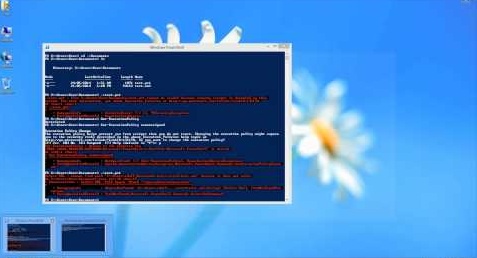The Script execution problem mostly occurs when you try to run specific commands and scripts on PowerShell to troubleshoot an issue on your PC. This issue “execution of scripts is disabled” may occur at times. Whatsoever, this option can be tweaked manually.

You can troubleshoot this issue, and you have to follow the solutions carefully. So let’s get started.
Fix 1: Use a Command on PowerShell to fix the problem
We have a specific command for PowerShell that can enable execution of script again in your PC. This method only takes a few minutes to make changes and fix the issue. It will change the policy of execution script on your PC, so let’s try this one out.
- To fix this issue, run PowerShell as administrator on your computer, to do so, right-click on your Start menu button.
- Now choose “Windows PowerShell (Admin)” option from the list.
- In Windows 7, you can search for it in the Start menu.
- If you are using the search option to open the PowerShell, then don’t forget to run it as an administrator by right-clicking on it.
- In PowerShell application, enter the command: “Set-Execution Policy RemoteSigned”, and then press the Enter key.
- Now it will start a short process, and then you may receive a message showing that the procedure has been completed successfully.
This solution mostly works for all Windows systems.
Fix 2: Change of Group Policies
If the previous method failed on your PC, then don’t panic; we have another way to kick this issue out of your PC.
Editing policies can be a solution to the issue. So let’s try fixing the problem by changing the group policies to a higher level. To do so, you have to navigate to the group policy editor and then edit the policies.
- Press Windows and R keys together at the same time to browse the Run dialogue box.
- Now type “gpedit.msc” and hit the enter key just after that.
- In Windows 10, open the start menu and then search for “group policy editor” and select the first result to run the Local Group Policy Editor tool.
- Navigate to the Computer Configuration from the left side options.
- Open Administrative Templates by double-clicking on it and then go to Windows Components.
- After that, go to Windows Powershell.
- Double click the Windows PowerShell folder and then look at its right side section.
- Navigate to the “Turn on Script Execution” policy option by double-clicking it.
- Now you will have to check the radio button which appears beside the “Enabled” option.
- In the Execution Policy section, select the “Allow all scripts” option. Afterwards, hit the Apply button located at the bottom.
- Now restart your PC to apply the changes.
After a complete reboot, you can check that your problem has been solved. This solution will hopefully fix the issue in your system.
Read more
Kellie Minton arrived on the cyber security scene in the early 2000s when virus and malware were still new and slowly evolving. Her longtime affair with writing with an interest in the cybersecurity industry, combined with her IT degree, has contributed to experience several aspects of security suite industry such as blogging at www.norton.com/setup.

No comments:
Post a Comment